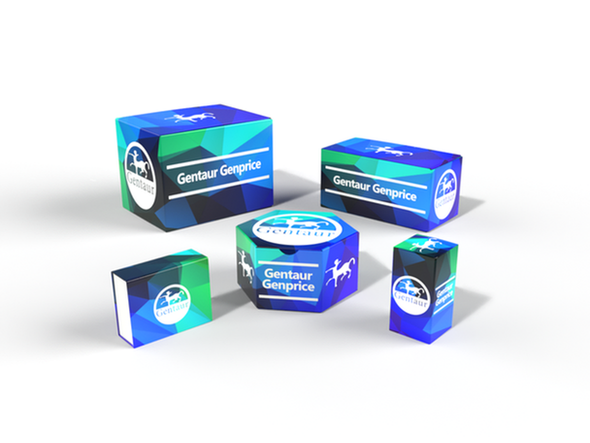Description
KCTD11 Antibody | 61-142 | Gentaur UK, US & Europe Distribution
Host: Rabbit
Reactivity: Human, Mouse
Homology: N/A
Immunogen: This KCTD11 antibody is generated from a rabbit immunized with a KLH conjugated synthetic peptide between 21-53 amino acids from human KCTD11.
Research Area: Neuroscience, Signal Transduction
Tested Application: WB, IHC-P
Application: For IHC-P starting dilution is: 1:25
For WB starting dilution is: 1:1000-1:2000
Specificiy: N/A
Positive Control 1: N/A
Positive Control 2: N/A
Positive Control 3: N/A
Positive Control 4: N/A
Positive Control 5: N/A
Positive Control 6: N/A
Molecular Weight: 26 kDa
Validation: N/A
Isoform: N/A
Purification: This antibody is purified through a protein A column, followed by peptide affinity purification.
Clonality: polyclonal
Clone: N/A
Isotype: Rabbit Ig
Conjugate: Unconjugated
Physical State: Liquid
Buffer: Supplied in PBS with 0.09% (W/V) sodium azide.
Concentration: batch dependent
Storage Condition: Store at 4˚C for three months and -20˚C, stable for up to one year. As with all antibodies care should be taken to avoid repeated freeze thaw cycles. Antibodies should not be exposed to prolonged high temperatures.
Alternate Name: BTB/POZ domain-containing protein KCTD11, KCTD11, C17orf36, REN
User Note: Optimal dilutions for each application to be determined by the researcher.
BACKGROUND: Plays a role as a marker and a regulator of neuronal differentiation; Up-regulated by a variety of neurogenic signals, such as retinoic acid, epidermal growth factor/EGF and NGFB/nerve growth factor. Induces apoptosis, growth arrest and the expression of cyclin-dependent kinase inhibitor CDKN1B. Plays a role as a tumor repressor and inhibits cell growth and tumorigenicity of medulloblastoma (MDB) . Acts as an E3 ubiquitin-protein ligase towards HDAC1, leading to its proteasomal degradation. Functions as antagonist of the Hedgehog pathway on cell proliferation and differentiation by affecting the nuclear transfer of transcrition factor GLI1, thus maintaining cerebellar granule cells in undifferentiated state, this effect probably occurs via HDAC1 down-regulation, keeping GLI1 acetylated and inactive. When knock- down, Hedgehog antagonism is impaired and proliferation of granule cells is sustained. Activates the caspase cascade.






![KCTD11 Antibody (N-Term) [AMM06173G] KCTD11 Antibody (N-Term) [AMM06173G]](https://cdn11.bigcommerce.com/s-1rdwiq712m/images/stencil/590x590/products/61061/61365/gentaur-genprice__26005.1661610467__29809.1661628092__75433.1661676199__77988.1661684280__64362.1661692443__16914.1661863903.png?c=1)